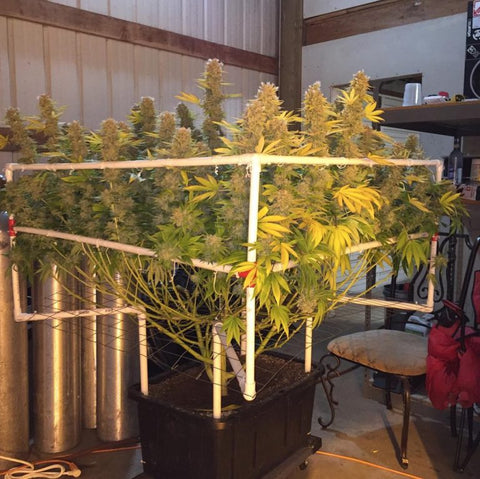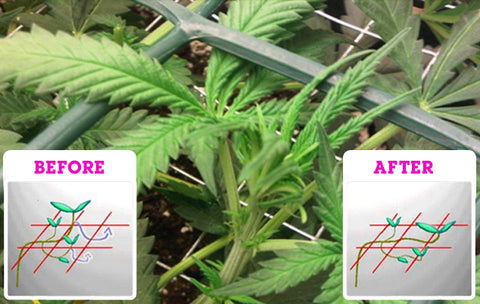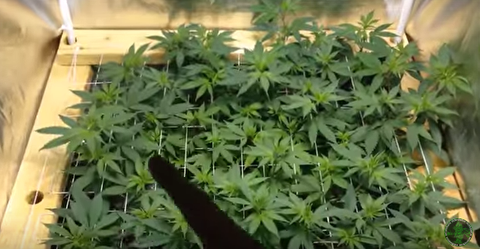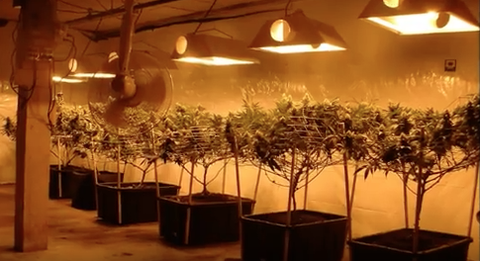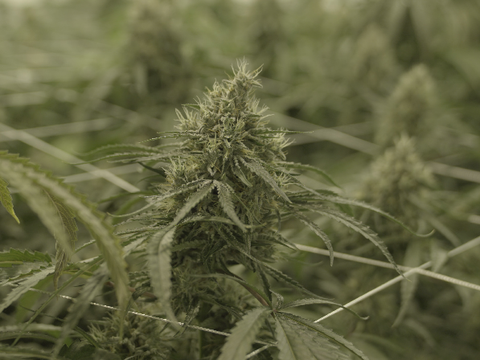ScrOG blOG™ — how to scrog
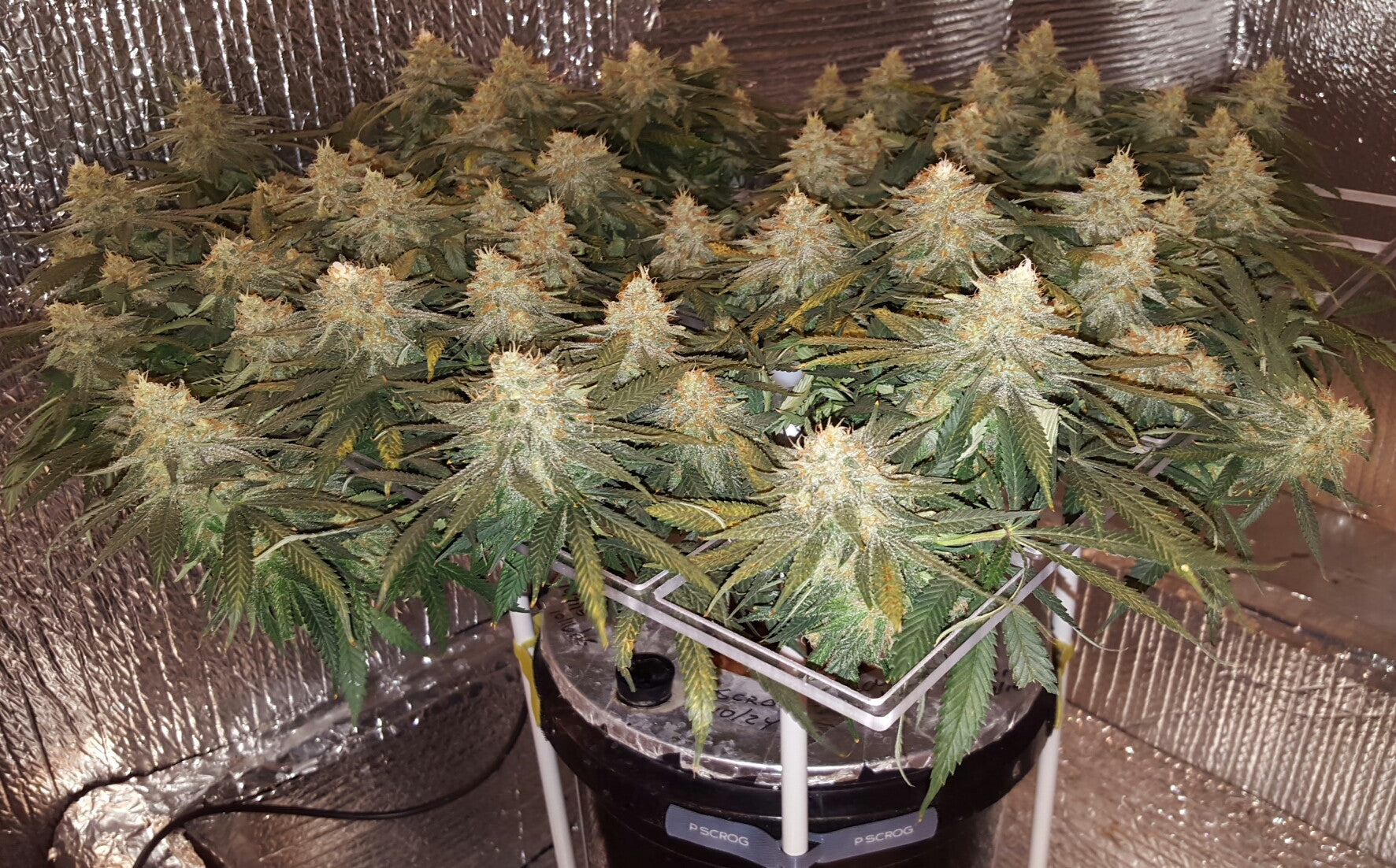
Best "How to ScrOG" Guides
Sea of Green (SOG) vs Screen of Green (ScrOG)
A great deal of confusion exists regarding the difference between Sea of Green (SOG) vs Screen of Green (ScrOG) methods of growing cannabis. Before I present what I consider to be some of the better "How to ScrOG" Guides, allow me to briefly define the difference between SOG and ScrOG.
SOG - SOG is used to create "perpetual harvests". The method involves high plant counts per cu ft and short grow cycles. Clones are introduced to 12/12 flowering with little to no veg cycle. Trellis or other screen material may be used to support heavy colas but no plant training techniques are used. Many growers cannot use SOG due to local plant count limitations.

Sea of Green (SOG), multiple plants
ScrOG - The ScrOG method involves lower plant counts, typically 1 plant per 2'x2' area. Veg periods vary, with longer veg periods resulting in canopies larger than 2'x2'. Screens are used to facilitate plant training which results in short bushy plants with virtually all target bud sites in the best lighting zone. ScrOG method is touted to produce 2 to 3 times the yield of traditional growing methods.

There are a number of variations of the ScrOG method. We have scoured the internet and selected what we consider to be some of the better "How to Guides" below.
Argument for single plant ScrOG
The original Screen of Green (ScrOG) was invented and popularized by Wolf Segal of Portland, Oregon. Previously, underground growers (including Wolf) would use SOG (Sea of Green) to ensure perpetual harvests. SOG puts several plants under one screen. Wolf was arrested and jailed during operation "Green Merchant" in the 90s and gained the distinction of having the highest plant count in history. Wolf then came up with the concept of ScrOG to dramatically reduce plant counts and at the same time maintain high yields.
Growers who have embraced the concept of ScrOG have found far more benefits than just reducing plant counts.
Why do many growers prefer single plant ScrOGs?
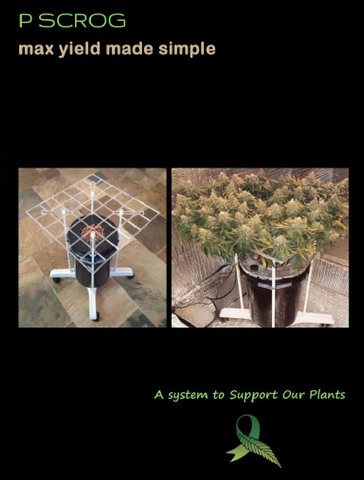
P SCROG Techniques
- Ease of providing individual plant care - When 2 or more plants are placed under a single ScrOG net, those plants are typically treated the same out of necessity. Growers have trouble getting to plants at the far reaches of the grow. All plants are treated the same despite their strain maturity level or health.
- Simple to move around if necessary - If you need to pull a plant from a grow for any reason, you need to cut the net and remove it, leaving remaining plants unsupported.
- Improved light distribution - Growers can rotate, custom adjust heights, plants grow at different rates and mature a different rates.
- Easy to remove troubled plant from grow space, lowers risk of damage to remaining crop
- Easier to water and flush
- Allows gardener to harvest plants individually at precise maturity
- Eliminates crawling under nets/wire mesh
- Wheel chair / handicap accessibility
- Irrigation equipment accessibility
- A single plant can be scrogged at an optimal time in its growth cycle. Otherwise, only the most aggressive growing plants enjoy the full benefit of Screen of Green.

P SCROG Techniques

MAXIMIZE YIELD
with
P SCROG Kits
P SCROG support 7 days a week - 512-528-6028
or
SupportOurPlants@SCROGGER.com
or
SupportOurPlants@SCROGGER.com
- Gary Memelstein
- Tags: best how to scrog guides best scrog guides cannabis plant training grow lights growing cannabis how to scrog hydroponics indoor grow lollipopping lst optimal light band intensity scrog scrog kit scrog method scrog product scrog screen scrog technique scrogging topping trellis trellis net
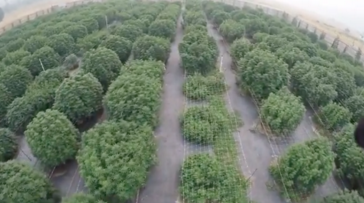
Okanogan Sunflower Farm
Although Okanogan county of Washington state during the gold rush was known for its gold nuggets, Terry Taylor is betting his company will become well known for the Okanogan Sunflower Farm and Okanogan Gold cannabis.
The Okanogan Sunflower Farm is near where the nomadic Northern Okanogans or Sinkaietk tribal group would roam. Their language was Salishan. Descendants of these tribes now occupy the Colville Indian Reservation. Okanogan is Salishan for "rendezvous"...and rendezvous they did!

Left to right, Chief Moses, Chief Tonasket, Chief Sar-sarp-kin. (Courtesy Okanogan Historical Society)
On February 23, 1896, the north half of the Colville Indian Reservation was thrown open for mineral entry, and within weeks, hordes of gold seekers flooded in and staked hundreds of claims. It has been estimated that as many as 1,500 prospectors and other outsiders were waiting just across the Columbia River. The story goes that signal fires were built when official word of the opening was received; these fires touched off a gold rush, and the mining frenzy was on. The gold rush ended in bust leaving the region with record numbers of ghost towns.
Terry Taylor is owner and operator of the Okanogan Sunflower Farm. Terry likes to talk about his great grandfather who lived and worked the land with the indians during the gold rush in what is now Okanogan county. He probably even shared cannabis medicine with the indians before it was prohibited by law.
Like his great grandfather during the Gold Rush, Terry is in the midst of the "Green Rush" frenzy with his 28 acre Okanogan Sunflower Farm and "Okanogan Gold" cannabis brand of bud and extracts. "We can still pan for gold in the Okanogan River which is used for irrigation at the farm", says Terry. "We are located in north central Washington where the mountains meet the desert. This region and its micro climate are ideal for growing high grade cannabis plants."
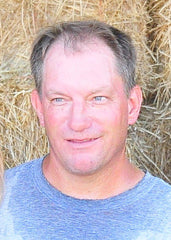
Hear Terry explain his cannabis operation in the YouTube video shot at the Okanogan Sunflower Farm, why he feels all plants should be ScrOGged and his predictions for the future of the cannabis industry. The drone footage is incredible. Please watch!

MAXIMIZE YIELD
with
P SCROG Kits
P SCROG support 7 days a week - 512-528-6028
or
SupportOurPlants@SCROGGER.com
or
SupportOurPlants@SCROGGER.com
- Gary Memelstein
- Tags: cannabis plant training growing cannabis how to scrog indoor grow indoor growing lollipopping low stress training lst outdoor grow screen of green scrog scrog kit scrog kits scrog marijuana scrog method scrog net scrog pot plants scrog screen scrog weed scrogging topping trellis trellis net
